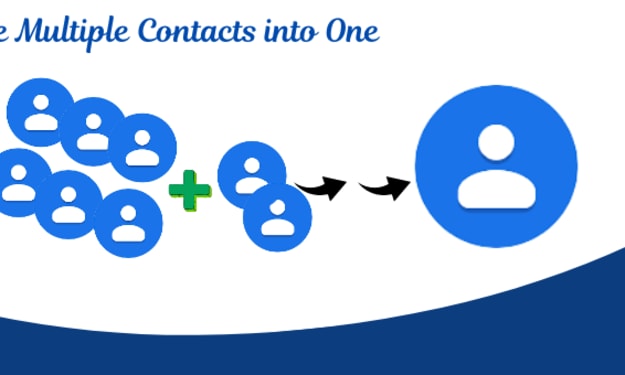The Problem with America's Health Care System
Exploring the Cost Disparities

Introduction
The conversation surrounding America's healthcare system has been a topic of great concern for many years. In particular, the high cost of healthcare in the United States has drawn significant attention. This article delves into the complexities of America's healthcare spending, comparing it to other countries and exploring the factors that contribute to its exorbitant prices.
Table of Contents
1. The Familiar Chart: Health Care Spending as a Share of the Economy
2. Public vs. Private Spending: A Surprising Revelation
3. The Role of Government in America's Health Care System
4. The Impact of Private Insurance on Health Care Costs
5. Comparing Health Care Consumption: America vs. Other Countries
6. The Price Variation Dilemma: Unveiling Disparity in Billing
7. The Power of Negotiation: Government vs. Private Insurance
8. Challenges Faced by the Uninsured
9. A Different Approach: Centralized Pricing Systems
10. The Government's Role in Saying "No"
11. The Illusion of Consumerism in Health Care
12. The Rise of Single-Payer Health Care
13. The Influence of Lobbying on Price Negotiations
14. The Paradox of American Health Care
15. A Step Towards Change: Bernie Sanders' Medicare Expansion Plan
Explaination
1. The Familiar Chart: Health Care Spending as a Share of the Economy
The discussion about America's healthcare system often involves comparing its spending to that of other nations. One frequently referenced chart demonstrates the proportion of health care spending in relation to the country's economy. Countries like Germany, France, Japan, and Canada all exhibit considerable healthcare expenditures. However, the presence of the United States stands out, indicating a significant disparity.
2. Public vs. Private Spending: A Surprising Revelation
The chart mentioned earlier fails to capture the full story. While it highlights the magnitude of America's healthcare spending, it overlooks an essential factor—the distribution of spending between public and private sectors. Surprisingly, America's government spending on healthcare, which includes programs like Medicaid, Medicare, and the VA, is comparable to that of countries where the government runs the entire healthcare system.
3. The Role of Government in America's Health Care System
Contrary to the prevailing belief that the government is more expensive than the private sector, the data reveals that public spending on healthcare in the United States is on par with other countries. These nations, where the government oversees the entire healthcare system, manage to provide healthcare services while controlling costs effectively.
4. The Impact of Private Insurance on Health Care Costs
The true culprit behind the exorbitant healthcare costs in America lies in the private insurance system. The conventional wisdom that the private sector outperforms the government in terms of efficiency and cost-effectiveness does not hold up when analyzing healthcare expenditures. It is the private insurance system that drives up healthcare expenses in the United States.
5. Comparing Health Care Consumption: America vs. Other Countries
Contrary to popular assumptions, Americans do not consume more healthcare than individuals in other countries. In fact, data suggests that Americans visit doctors less frequently than Germans or Japanese individuals. The crucial distinction lies in the price Americans pay for healthcare services—each visit comes with a higher price tag.
6. The Price Variation Dilemma: Unveiling Disparity in Billing
The cost of healthcare in America varies significantly depending on who bears the financial burden. The same medical procedure performed at the same hospital can have vastly different prices based on the payer. Public insurance programs like Medicare and Medicaid often secure the lowest prices due to their substantial coverage and bargaining power. In contrast, individuals with private insurance face higher costs, and the uninsured are left with the highest price tags.
7. The Power of Negotiation: Government vs. Private Insurance
The negotiation dynamics between healthcare providers and payers play a crucial role in determining the costs of medical procedures. In countries with centralized pricing systems, the government dictates the prices for healthcare services. By representing the entirety of the population, the government possesses substantial leverage in negotiations. In contrast, the fragmented nature of the American private insurance market leaves hospitals and doctors to negotiate prices individually, resulting in inflated costs.
8. Challenges Faced by the Uninsured
The uninsured population in America faces significant challenges in accessing affordable healthcare. With no entity negotiating on their behalf, uninsured individuals are subject to the highest prices for medical services. Research indicates that hospitals often charge uninsured patients up to four times more than Medicare patients for the same emergency room visit, exacerbating the financial burden on those without insurance coverage.
9. A Different Approach: Centralized Pricing Systems
Unlike America, many countries adopt centralized pricing systems, allowing the government to establish fixed prices for healthcare services. By presenting a comprehensive list of acceptable prices, governments can effectively regulate costs and control spending. This approach ensures that healthcare providers receive fair compensation while keeping prices affordable for patients.
10. The Government's Role in Saying "No"
Centralized pricing systems grant the government the authority to negotiate prices on behalf of the population. The government can assertively demand lower prices from hospitals and doctors, leveraging the vast number of individuals covered by public insurance programs. Providers who refuse to comply risk losing a substantial portion of their business, creating a powerful incentive for them to agree to the government's terms.
11. The Illusion of Consumerism in Health Care
Unlike purchasing goods or services in a consumer-driven market, healthcare decisions often arise under challenging circumstances. Patients seeking medical care may find themselves in urgent or vulnerable situations, leaving them with limited bargaining power. Consequently, the notion of consumerism, which works well in other sectors, falls short when applied to healthcare.
12. The Rise of Single-Payer Health Care
Advocates for healthcare reform in the United States have begun to propose a single-payer system, inspired by the European model. Under a single-payer system, the government would establish a comprehensive price list, akin to those in countries with centralized pricing systems. However, implementing such a system would require meticulous negotiation to prevent the influence of hospitals, doctors, and drug companies on pricing.
13. The Influence of Lobbying on Price Negotiations
One of the challenges faced in transitioning to a single-payer system is the substantial lobbying power held by healthcare stakeholders. Lobbying efforts from hospitals, doctors, and drug companies can potentially influence price negotiations, hindering efforts to drive down healthcare costs. The significant influence these stakeholders wield due to their substantial wealth poses a hurdle to achieving significant price reductions.
14. The Paradox of American Health Care
The paradox of American healthcare lies in its escalating costs, which make it increasingly challenging to achieve meaningful cost reductions. The immense wealth generated by the healthcare industry has translated into significant political influence, impeding efforts to curtail expenses. Breaking free from this cycle requires innovative approaches to address the intertwined issues of cost, quality, and access.
15. A Step Towards Change: Bernie Sanders' Medicare Expansion Plan
Amidst the discourse surrounding single-payer healthcare, Bernie Sanders has proposed an interim plan to expand Medicare. His proposal aims to extend coverage to include vision and dental care while making Medicare available to nearly everyone, not just individuals aged 65 and older. While this plan may not bring about immediate substantial reductions in healthcare spending, it represents a recognition of the government's potential to deliver cost-effective and high-quality care.
Conclusion
The American healthcare system's cost conundrum emerges from a combination of factors, including the disproportionate influence of the private insurance sector, the absence of centralized pricing, and the challenges faced by uninsured individuals. The complexity of healthcare decisions and the inherent power imbalance between patients and providers further complicate the concept of consumer-driven healthcare. While the prospect of a single-payer system presents its own challenges, recognizing the government's capacity to negotiate prices and provide affordable care represents a crucial step forward.
About the Creator
Tajamul Hassan
An accomplished professional in the field of Management Sciences, Nutrition, and Health and Fitness. Over a decade of extensive experience in development as well in Health Sector. Dedicated to improving people's lives.






Comments
There are no comments for this story
Be the first to respond and start the conversation.